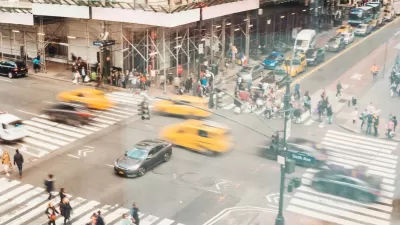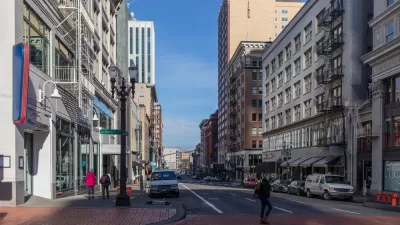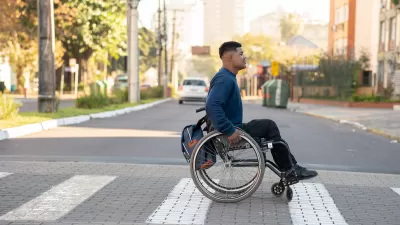Pedestrian fatalities are rising, and one city council candidate has had enough.
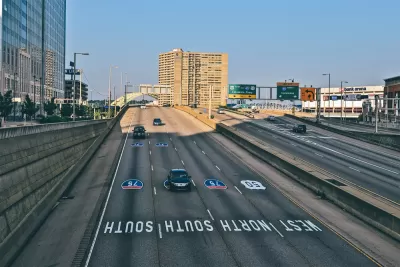
Cincinnati City Council candidate Derek Bauman would like to talk to you about traffic safety.
The city is in the midst of "a public safety crisis of immense proportions," the former police officer writes in the Cincinnati Enquirer. The statistics are damning: Since 2013, crashes involving pedestrians have risen nearly 50 percent. In 2018, more than one person was a struck by a car each day. And in the first three months of the current school year, 13 public school students were hit by cars on their way to or from school.
Bauman's proposed solution is for the city to adopt Vision Zero, a commitment to zero traffic fatalities that combines policy changes, street design, and more. That approach is supported by Cincinnati Mayor John Cranley, who recently promised to increase traffic enforcement and street improvements in the city.
Several smaller cities around the country have successfully eliminated traffic fatalities by implementing a Vision Zero framework, while larger cities have had more mixed results—thanks in part, advocates say, to a lack of political leadership. "Successfully implementing Vision Zero in Cincinnati would involve bringing together traffic engineers, public safety personnel, education professionals, public health professionals, members of the public and other stakeholders to work collaboratively toward our own shared goal of zero fatal and serious injury crashes," Bauman writes.
FULL STORY: Opinion: Fatalities climb as few changes are made to calm traffic

Study: Maui’s Plan to Convert Vacation Rentals to Long-Term Housing Could Cause Nearly $1 Billion Economic Loss
The plan would reduce visitor accommodation by 25,% resulting in 1,900 jobs lost.
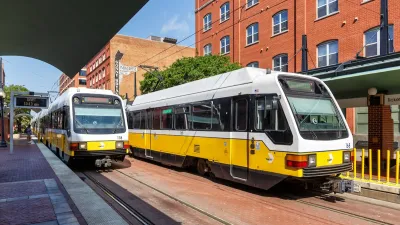
North Texas Transit Leaders Tout Benefits of TOD for Growing Region
At a summit focused on transit-oriented development, policymakers discussed how North Texas’ expanded light rail system can serve as a tool for economic growth.

Why Should We Subsidize Public Transportation?
Many public transit agencies face financial stress due to rising costs, declining fare revenue, and declining subsidies. Transit advocates must provide a strong business case for increasing public transit funding.
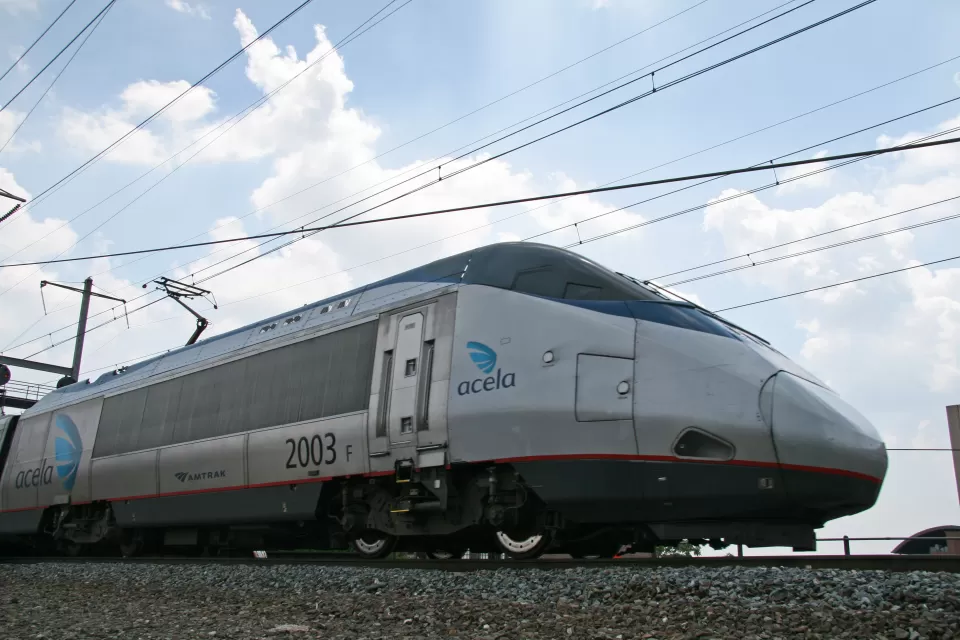
How to Make US Trains Faster
Changes to boarding platforms and a switch to electric trains could improve U.S. passenger rail service without the added cost of high-speed rail.

Columbia’s Revitalized ‘Loop’ Is a Hub for Local Entrepreneurs
A focus on small businesses is helping a commercial corridor in Columbia, Missouri thrive.

Invasive Insect Threatens Minnesota’s Ash Forests
The Emerald Ash Borer is a rapidly spreading invasive pest threatening Minnesota’s ash trees, and homeowners are encouraged to plant diverse replacement species, avoid moving ash firewood, and monitor for signs of infestation.
Urban Design for Planners 1: Software Tools
This six-course series explores essential urban design concepts using open source software and equips planners with the tools they need to participate fully in the urban design process.
Planning for Universal Design
Learn the tools for implementing Universal Design in planning regulations.
Ascent Environmental
Borough of Carlisle
Institute for Housing and Urban Development Studies (IHS)
City of Grandview
Harvard GSD Executive Education
Toledo-Lucas County Plan Commissions
Salt Lake City
NYU Wagner Graduate School of Public Service


























